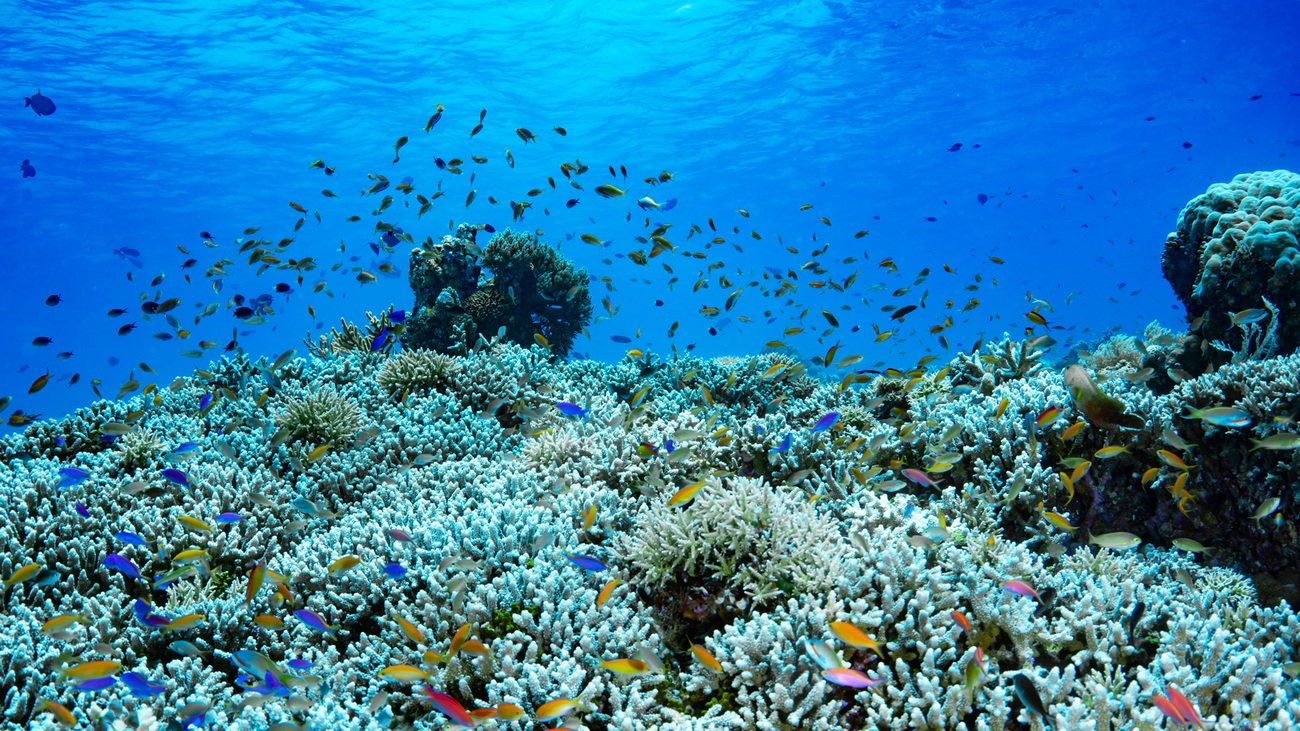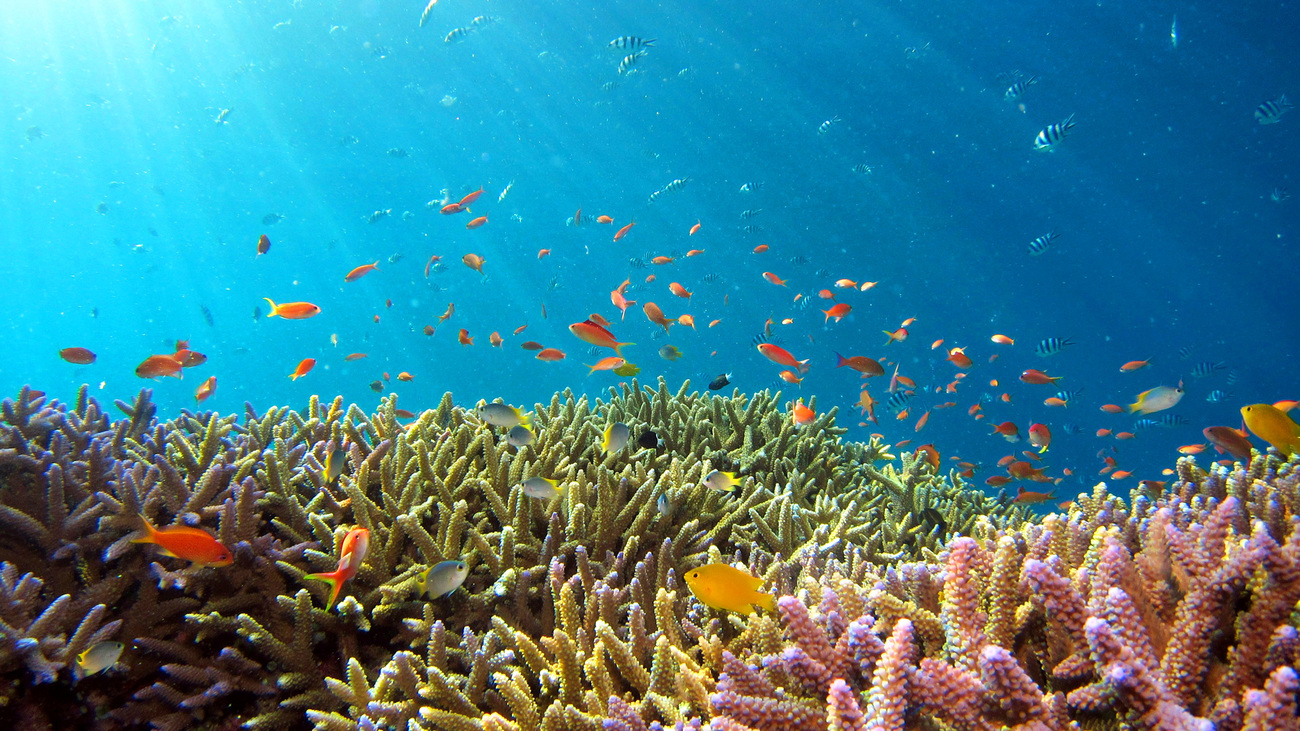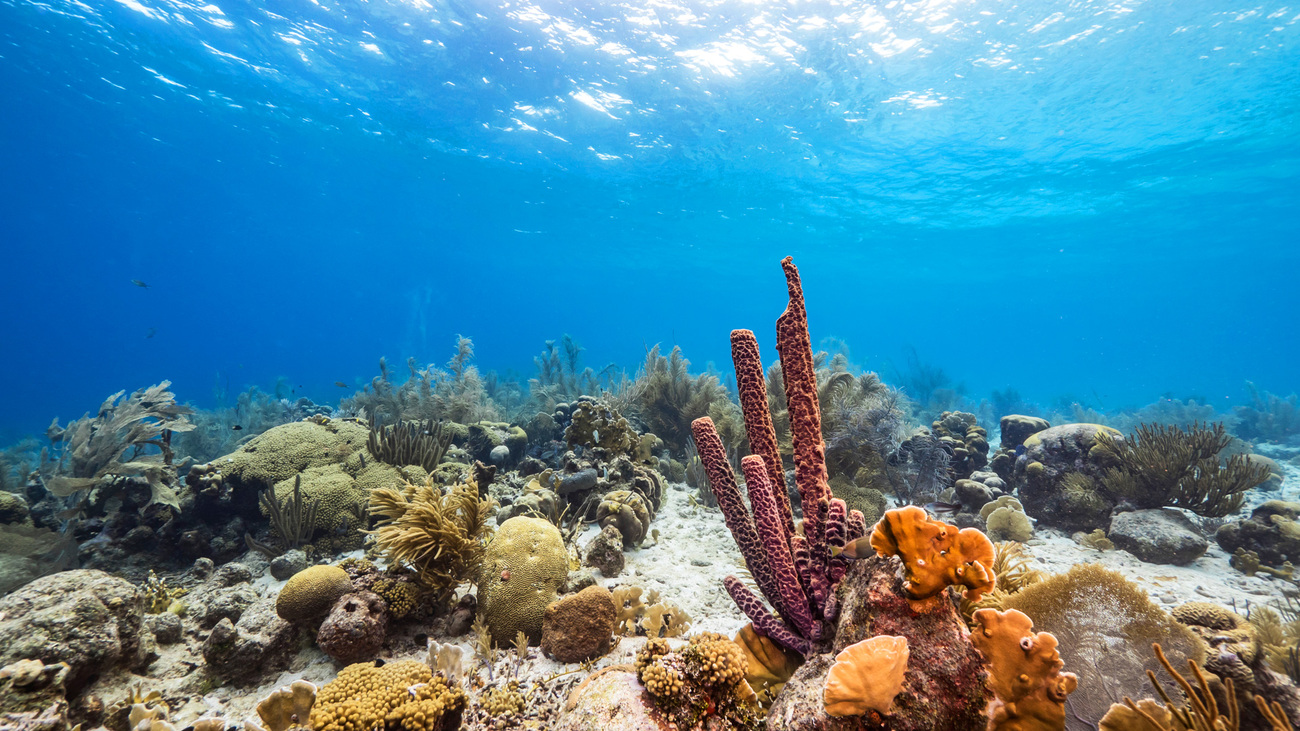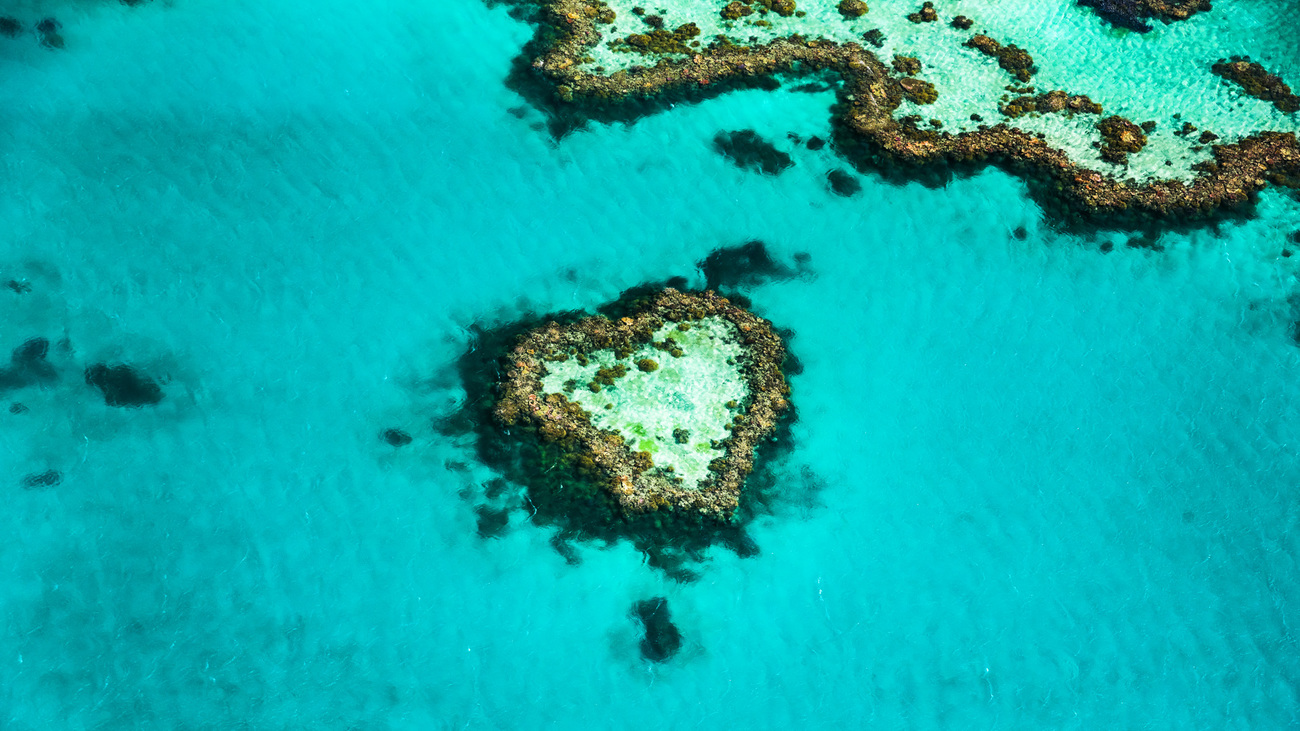Coral
What is coral?
Coral reefs, often called the ‘rainforests of the sea’, are among the most biologically diverse and economically valuable ecosystems on Earth. Despite occupying less than 1% of the ocean, coral provides a habitat for approximately 25% of the world’s marine life, sustaining more than 4,000 fish species. They are also home to a wider pool of unique biodiversity, including invertebrates, mammals, turtles, and algae. The reefs provide both food and shelter to the marine animals within their ecosystem, with many of the local marine animals camouflaging in the coral.
Corals are often mistaken for colourful rocks, or perhaps even plants, but they’re actually animals, with 851 species listed on the IUCN Red List and around 6,000 species in the world. The term ‘coral’ refers to marine invertebrates in the class Anthozoa of the phylum Cnidaria. Coral organisms are called polyps, which are very small and soft animals related to jellyfish and sea anemones. Coral polyps are cylindrical shaped, with a mouth at the end that’s surrounded by barbed, venomous tentacles. These tentacles can be used to both gather food and sting potential threats. Coral polyps are typically clear, with the reefs getting their characteristically brighter colours from algae that grow in the polyps’ tissue.
Corals live together in very large groups called colonies. The coral polyps secrete calcium carbonate to create calicles—a hard and protective limestone exoskeleton—that form the supportive rocky structure for coral reefs. Just like trees, corals have their own growth rings. Coral reefs are formed when a polyp attaches itself to a rock and then begins dividing itself into clones. The individual polyp calicles connect with one another to form the coral colony, which then acts as a single organism. Eventually, distinct colonies join together to form coral reefs.
Tropical coral reefs thrive with a lot of sunlight and warmer temperatures. They therefore tend to grow in clean, shallow waters of up to 70 metres (230 feet) deep, nearer to the equator. These shallow water coral reefs have a symbiotic relationship with photosynthetic algae called zooxanthellae. The zooxanthellae live in the protective environment of the coral and receive specific compounds required for photosynthesis. In return, the algae photosynthesise to remove waste from the coral, produce carbohydrates which feed the coral, and emit oxygen. Coral gets most of its nutrients from the zooxanthellae’s products of photosynthesis, but during the night, they sometimes stick out their tentacles to grab prey, including zooplankton and small fish. Once they’ve digested their food, polyps’ waste exits through their mouths.
Although coral reefs are commonly found in shallow tropical waters, they have also been found in cooler waters of 4°C (39°F) and 2,000 metres (over 6,500 feet) deep. These deep sea coral reefs rely less on photosynthesis for their source of energy, instead feeding on food particles in the water. Deep sea corals help sustain life in more barren areas of the vast ocean.
The largest coral reef system is the Great Barrier Reef, found in Australia. Other widely known reefs include the Amazon Reef in Brazil and French Guiana, the Tubbataha Reef in the Philippines, and the Miami Terrace Reef in the US. Today’s established reefs are between 5,000 to 10,000 years old, though it’s thought that the first coral reefs were formed as long as 240 million years ago. Smaller, individual corals that don’t become reefs may only live for a year or two.
Coastal coral reefs bring many benefits to their local communities. For example, they help to break the power of strong waves, preventing severe flooding, lowering the risk of tsunamis, and reducing coastal erosion. They also provide a source of food and medicines from the plethora of marine life that inhabit coral ecosystems. Coral reefs are also huge drivers of tourism, attracting people from all over the world to come and see their beauty. It’s estimated that coral reefs create a net economic value of tens of billions of US dollars each year. Plus, they help keep coastal waters clean and clear, as the coral consumes the particles that would otherwise cause murky waters.
Although rainforests are more widely recognised for their role in mitigating climate change, coral reefs are also key. Not only do the algae that live in coral tissue help remove carbon dioxide from the atmosphere through photosynthesis, but corals also can capture and store carbon dioxide by converting it into calcium carbonate, which forms the rocky structure of the reefs.
To learn more about the fascinating world of coral reefs and how they can help our planet, check out some of the facts below.
What is the scientific name for coral?
The scientific name for coral is Anthozoa, which is a class within the phylum Cnidaria. With over 6,000 species, including sea fans, sea pansies, and anemones, Anthozoans make up the largest class of organisms within Cnidaria.
Is coral in danger of extinction?
Unfortunately, many coral species are in danger of becoming extinct. Coral reefs are shrinking all over the world—14% have disappeared since 2009. The Intergovernmental Panel on Climate Change (IPCC) has projected that between 70% and 90% of coral reefs will vanish if global temperatures rise by 1.5°C, and as much as 99% will disappear if temperatures rise by 2°C.
On the IUCN Red List, 851 species of coral are listed. Of these species:
- 26 are classed as critically endangered, including the staghorn coral, elkhorn coral, and artichoke coral
- 27 species are classed as endangered, including the lobed cactus coral, chagos brain coral, and boulder star coral
- 203 coral species are listed as vulnerable, including the distorted mushroom coral, elegance coral, and blue coral
- 180 coral species are classed as near threatened, including the bubble coral, smooth cauliflower coral, and whisker coral
As for the rest of the coral species, they’re either classified as least concern or there is insufficient data to make an accurate assessment.
The key threats contributing to the possible extinction of coral include climate change, ocean pollution, destructive fishing practices, and coral mining.
Where are coral reefs found?
Coral reefs can be found all over the world. There are two types of coral reefs, including tropical shallow water reefs, and deep water reefs. Shallow water reefs are usually found on either side of the equator, thriving in the abundance of sunlight and warmth. The most well-known shallow water coral reefs include the Great Barrier Reef in Australia, the Amazon Reef in Brazil and French Guiana, the Tubbataha Reef in the Philippines, and the Miami Terrace Reef in the United States.
Deep water reefs are better suited to colder temperatures and lower levels of sunlight, found in the dark depths of the open ocean.
Threats
Coral reefs—some of the most biodiverse ecosystems in the world—face a series of threats to their health and survival. Climate change, pollution, overfishing, destructive fishing practices, and coral mining are all putting pressure on the coral species.

Climate change
Climate change is the biggest threat to the coral reefs. As global temperatures rise, so do ocean temperatures. Warmer waters stress corals, causing them to expel the symbiotic algae (zooxanthellae) living in their tissues. Without zooxanthellae there to photosynthesise and provide food to the coral, the coral loses its colour in a process called “coral bleaching.” While bleaching isn’t immediately fatal, it can significantly slow the growth rates of coral and increase their susceptibility to disease. Between 2014 and 2017, unusually higher ocean temperatures led to a mass coral bleaching event, which impacted around 70% of coral reefs globally.
Another consequence of climate change is ocean acidification. Oceans absorb carbon dioxide from the atmosphere, so with an increase in carbon dioxide emissions comes an increase in ocean acidity. This acidification reduces the availability of the carbonate ions corals need to build their calcium carbonate skeletons, hindering their growth. It also weakens their structures, making them more susceptible to erosion and breakage.
Pollution
Runoff containing pesticides, fertilisers, and sewage increases nutrient levels in ocean waters, leading to algal blooms that can block sunlight. Plastic waste that ends up in the ocean can damage the coral structures and other marine life inhabiting the ecosystem.
Overfishing and destructive fishing practices
Overfishing causes an imbalance in the food web within the coral reef ecosystem. Upsetting this balance has knock-on effects that can impact species within the habitat. Destructive fishing practices, which use dynamite and cyanide to capture as many fish as possible at once, not only destroy coral skeletons, but also kill a vast array of marine organisms.
Unsustainable coral mining
The collection of live corals for the aquarium trade and the mining of coral for building materials are direct human actions that physically remove coral from reefs. These activities not only harm the overall structure of coral reefs, but can also reduce the biodiversity and resilience of the ecosystem.
FAQs
What colour is coral?
Individual coral polyps are typically clear, and the zooxanthellae algae that live in its tissue give coral its colour. Coral reefs can feature an array of different colours, from golden-yellow and browner pigments to deep red and bright oranges—or even blues and greens.

Is coral an animal?
Yes, coral is an animal, despite being commonly mistaken for a plant or a rock. Coral branches are actually made up of many tiny animals called coral polyps. Polyps secrete calcium carbonate—also known as limestone—to form the rocky structures that make up their exoskeletons. Coral polyps are invertebrates that can range in size from just a few millimetres to 30 centimetres (0.04 to 12 inches) in diameter. These polyps have mouths encircled by venomous tentacles which they use to defend themselves and catch prey.
What does coral eat?
Most corals have a symbiotic relationship with algae called zooxanthellae, which live in the tissue of coral polyps. The algae photosynthesise to create carbohydrates, which feed the polyps. Corals also catch prey, including zooplankton and small fish species, using their stinging tentacles.
How are coral reefs formed?
Coral reefs are formed when coral polyps attach to rocks. From there, they begin to divide and multiply to form colonies. The colonies secrete limestone to build the hard structures that protect the coral. Colonies then join together to form larger coral reef ecosystems. Some coral species reproduce asexually, while others reproduce sexually.

What animals live in coral reefs?
Dubbed the ‘rainforests of the ocean’, coral reefs are teeming with biodiversity. Coral reefs are home to approximately 25% of the world’s total marine life. There are more than 4,000 fish species that rely on coral reefs, as well as a vast array of crustaceans and invertebrates.
Why is coral important?
Coral reefs are critical to the health of our oceans, providing a habitat to a quarter of all the marine life in the world. They’re also key to mitigating climate change, by removing a significant amount of carbon dioxide from the atmosphere.
Beyond its environmental significance, coral also brings economic value. They attract large amounts of tourism, which can support local communities. They also provide food sources to humans through the abundance of fish and crustaceans they attract and maintain.
Coral reefs also act as natural breakwaters, reducing the impact of waves and storms on coastlines. This prevents coastal erosion and protects local towns from the potentially devastating effects of large waves and storms on coastlines.
How can you help?
Supporting marine conservation efforts and nature-based solutions to climate change can help protect coral reefs.
